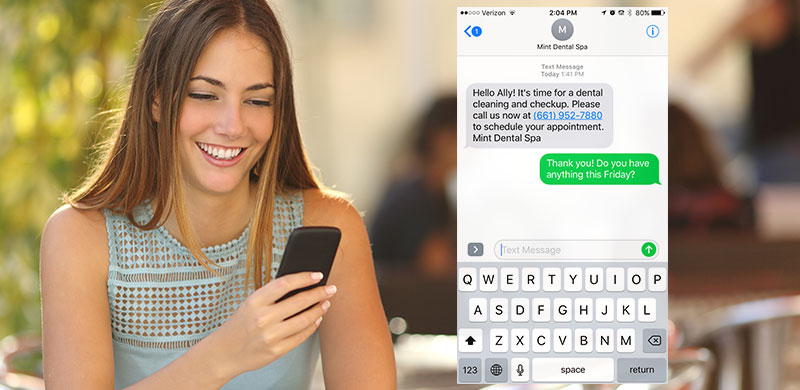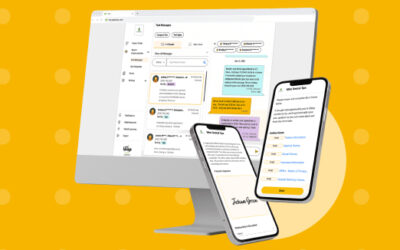
Very few marketing activities can beat the ROI of a well-designed recall and reactivation program. An effective recall system increases patient retention and practice growth and has a positive impact on a patient’s dental health.
How can you implement a great recall system or improve upon the strategy you currently use? The best way to maintain patient recall is to be proactive. Meet with your team and design a communication schedule that best fits your practice. Put it in writing and stay consistent. Use a variety of mediums to reach all of your patients who may have different contact preferences.For example, you can utilize:
- Postcards
- Text
- Voice calls
Continue to reach out to your patients unless they move or expressly notify you that they are leaving your practice.
Introducing Automation
Of course, putting together a well-orchestrated recall plan is challenging enough. Keeping up with it consistently can be an even greater challenge. This is where automation comes in. Automation software saves the scheduling coordinator valuable time.
Effective automation software should enable you to input preferences such as timing, medium and the message in order to best reach patients that are due for an appointment.
Above is an example of YAPI’s Recall Manager, which allows you to choose the exact time that an email, text or postcard should go out and input the message.
Related: Your Guide to the Recall Manager
Automation software like YAPI lets you set up a schedule of cascading messages that utilize different mediums to reach patients who have different communication preferences. YAPI allows you to vary the message with each communication. Some things to note:
- A single email or text might not be enough. Some patients will need multiple reminders to encourage them to take action. That is why YAPI allows you to consistently send out messages at predetermined intervals.
- Combine automation with a personal touch to maintain patient relationships. YAPI’s Recall Manager keeps track of all communication that went out and shows a list of patients that need to be contacted in person.
Non-Responsive Patients
Most of your patients will probably respond to the automated messages you send, but some will not. That is where YAPI’s list of patients to be contacted personally comes in handy. Reach out to these non-responsive patients with a phone call. We recommend that you don’t wait until their appointment date to contact them and that you continue to reach out until you get them on the schedule. The best time to call a patient is 3-7 days after they received an automated reminder.
Remember, there is almost always a reason why a patient has not responded. It’s possible that they have been meaning to schedule after receiving your reminder but just got busy. If this is the case, they will be glad to hear from you when you call.
A fear of the dentist, cost or a past unpleasant experience might prevent patients from scheduling. Whatever the reason is, a well-trained scheduling coordinator can help your patients work out their issues and get them back into the chair.
The longer you wait to reach out, the harder it will be to get these patients back into the office.
Don’t Give Up!
Don’t end communication with your patients just because you haven’t heard from them. Statistically, 40% of patients don’t see their dentist every year. Just because they haven’t had their teeth cleaned in a year does not mean that they don’t think of you as their dentist. Stay top of mind with consistent communication and see many of your patients return when they are ready. Remember, being proactive is key!




